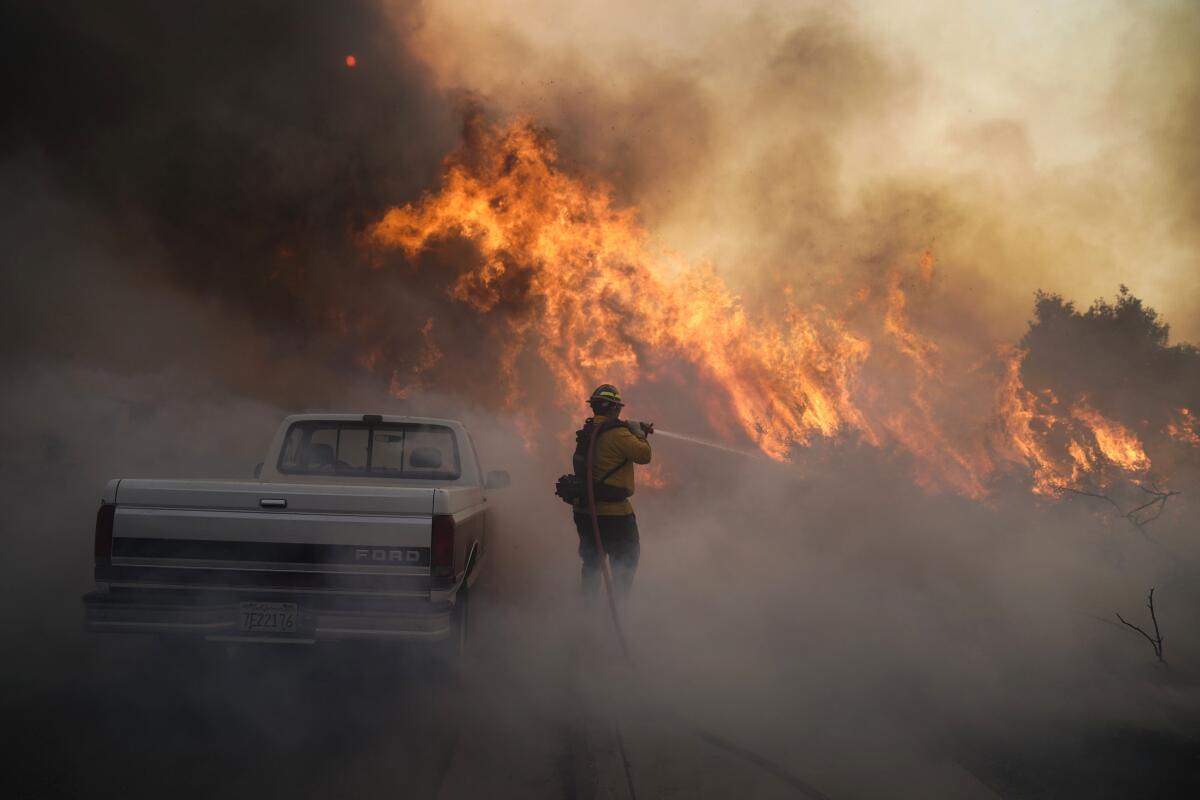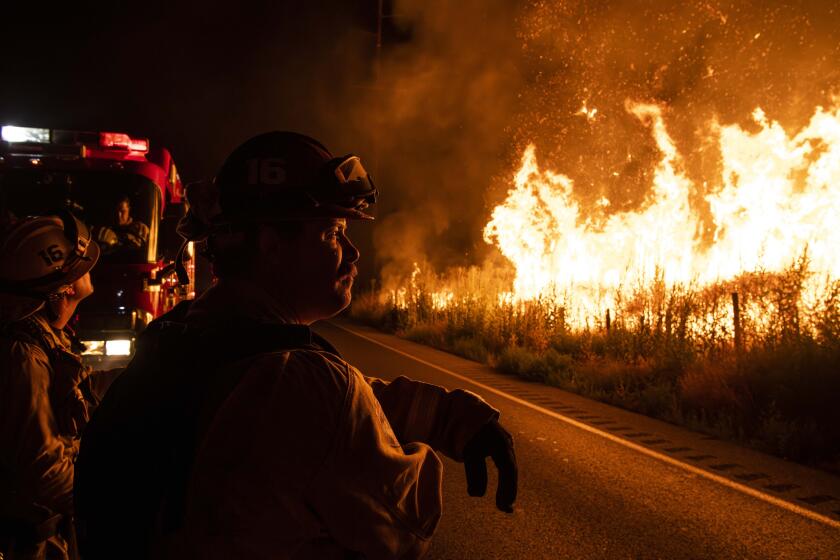Opinion: This wildfire season, here’s another terrifying threat to worry about

- Share via
This fire season, Americans have been inundated by smoke from wildfires that destroyed vast forestlands in Canada, and we witnessed in horror an entire community burned to the ground in Maui. Although California’s fire season has so far been light because of a wet winter, many of our state’s most destructive and deadliest fires have occurred in October and November. Heightened fire danger is predicted throughout parts of Northern California well into October.
For decades, Californians have benefited from one of the strongest firefighting alliances in the world. In fact, the system now used nationally to manage and mitigate wildfires and other emergencies was forged in California in 1970 from a partnership that included the U.S. Forest Service, the California Department of Forestry and Fire Protection (Cal Fire) and local firefighting agencies. The system’s success depends on every partner contributing firefighters and resources, whether in the Klamath National Forest or the hills above Malibu.
Recent storms have dampened conditions but have also spurred new vegetation that could act as fuel for fires. Also, strong fall winds have yet to arrive.
This year, however, this partnership faces its own threat: looming pay cuts to thousands of federal wildland firefighters.
Funding from the 2021 Infrastructure Investment and Jobs Act created temporary biweekly raises for federal firefighters that have been expected to end sometime after this September. With its recent stopgap agreement to avert a shutdown, Congress guaranteed current levels of federal firefighter pay until Nov. 17. Without further action, however, the funding will not renew. That will leave federal wildland firefighters at risk of losing half of their base pay, a loss of up to $20,000 a year for these workers.
Members of Congress have already proposed bipartisan bills that could shore up pay and benefits for our firefighters. It’s imperative that our government take legislative action to permanently secure and stabilize the earnings of those bravely defending our communities.
The consequences of inaction are dire. If lawmakers don’t stabilize firefighter pay, about a third to half of the 11,000 U.S. Forest Service firefighters could leave the service, according to the National Federation of Federal Employees.
The Government Accountability Office has confirmed that low pay for federal firefighters is already pushing workers out of federal service and deterring others from joining the force. The agency concluded in a June report that “the pay does not reflect the risk or physical demands of the work” and that it “was not competitive with nonfederal entities.” At the start of the 2022 wildfire season, only about 70% of federal firefighting positions were staffed. California has already seen a decline, losing more than 20% of the state’s Forest Service firefighters between 2019 and 2021 — years when our state faced three of our largest wildfires in history.
European ideals transformed North African and Californian landscapes, damaging the natural ecosystems preserved by Indigenous peoples.
Congressional inaction leading to pay cuts could worsen this problem and prompt an exodus of Forest Service firefighters. This would strain California’s integrated wildfire response system, placing a significant burden on Cal Fire and local government partners who would have to carry the load.
This imbalance would heighten the danger when multiple large fires burn simultaneously, tying up California’s fire equipment and staffing needed to keep new fires small and combat large fires that spread to communities and watersheds. It would jeopardize the response to fires across California, including the national forests.
It’s not just about having firefighters during fire season. The Forest Service must build and retain a robust, experienced workforce year-round to prevent disasters by increasing the use of prescribed fires — intentionally ignited, controlled burns that reduce vegetation and wildfire risk — and other forest treatments, such as the thinning and mechanical removal of vegetation, that similarly aim to mitigate potential wildfire fuel. Without the workforce to carry out those efforts, we’ll see fires only get larger, placing more communities and natural resources at risk and ultimately requiring even more firefighters to suppress.
A strained and understaffed U.S. Forest Service weakens the whole firefighting system, all the way down to municipal agencies. A failure to act on federal firefighter pay is a gamble on lives, property and natural resources — and recent tragedies remind us that we can ill afford to take chances.
We cannot address the growing threat of catastrophic wildfires while severely under-compensating the people tasked with stopping and preventing them. Congress needs to act to maintain Forest Service firefighters’ pay.
Ken Pimlott was chief of Cal Fire from 2011-18.
More to Read
A cure for the common opinion
Get thought-provoking perspectives with our weekly newsletter.
You may occasionally receive promotional content from the Los Angeles Times.












